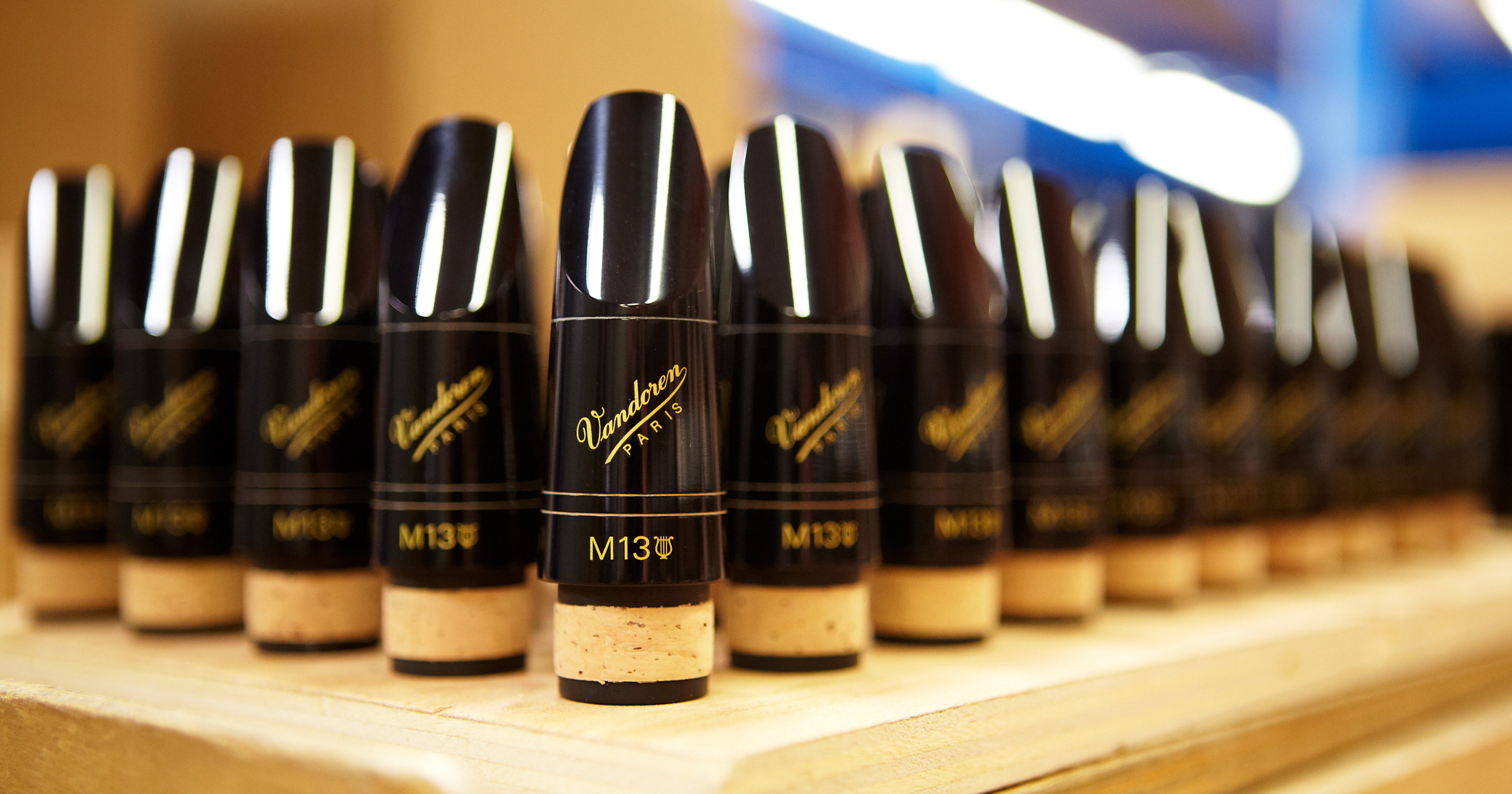Tips on Selecting a New Mouthpiece by David Gould: Vandoren Artistic Advisor and Product Specialist
Date Posted: May 04, 2016

Every serious young musician, some older ones too, end up looking for a new mouthpiece at one point or another. Some even follow a circuitous path continually searching for that special mouthpiece. After more than a decade of working with clarinetists and saxophonists on a daily basis, I thought I would put together a little guide that could help the musician, young or old, try and ultimately find the right mouthpiece.
How to Try a Mouthpiece:
New Reeds
1) All mouthpieces like to be tried with new reeds. This will give you a good idea of what you are getting into in terms of a base line. Older reeds will in some way conform to your mouthpiece rather than be a good tool for judging a new mouthpiece.
Old Mouthpiece Changes
2) It is understood that your old mouthpiece will change as time goes on, it will always be playable, but it will change from its original state. Used mouthpieces always feel freer blowing and consequently, it could also be a bit brighter than when it was new. The player will also have trouble finding new reeds that work on the old mouthpiece.
Reed Placement
3) Try to be sure to place the reed in the same place on each mouthpiece. The position of the reed on a mouthpiece can create enormous differences in sound, feel, and response. There is a bigger difference from reed to reed than there is from mouthpiece to mouthpiece.
Reed Playability
4) Your new mouthpiece should play most if not all of the reeds in the box. For example, do not choose a mouthpiece where the number 3 reeds are a little too soft and the number 3.5 reeds are a little too hard.
Play Something Challenging
5) Try doing the things that you have trouble doing. The new mouthpiece is supposed to help.
Mouthpiece Goals
6) The goal of upgrading your mouthpiece is to make your life easier!
Questions to Ask Yourself
Use the following questions as a guide:
- Does the new mouthpiece help me play better in tune (overall pitch as well as intonation from note to note on your instrument)?
- Can I articulate better with the new mouthpiece (faster overall articulation, or is there more variety in the types of articulation, or is there a better control of the attack in different registers)?
- How is the tone I get with the new mouthpiece? Do I like it? Is it darker or brighter? Does it project better?
These tests are the best way to determine if a new piece of equipment is better than your old standby. One very important piece of advice that you should know is that you adapt very quickly to new things if you let yourself adapt.
FAQs
Should I try different models of Vandoren mouthpieces?
Certainly, Vandoren makes a large variety of mouthpieces to try and help correspond to the musician’s needs and desires. You may find a mouthpiece that is better for you to play. It would be easy to make just two or three different types, but then the musician would be severely limited in terms of options.
When trying Vandoren mouthpieces do I need to try more than one of the same model?
1) If you are replacing your old mouthpiece with a newer version of the same model, you may want to try a couple, to see if there is a subtle difference from mouthpiece to mouthpiece in terms of playing sensations.
2) If this is a new model for you, you should try no more then 1 or 2 of them. The quality of workmanship and consistency are the industry standard. You will find a great mouthpiece.
3) Know that if you try three of the same mouthpieces, you will always find a “winner.” However that winner may not be the same from day to day.
A new mouthpiece will come with new sensations that one must accept. Always remember that the reason for the quest for better equipment is just a means to an end. That end is to help you better perform the music you wish to share with the listener.